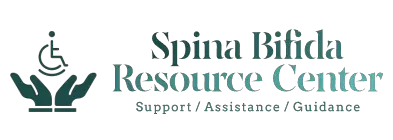Obesity in Patients With Spina Bifida
About 1,500 babies in a year are born with spina bifida. The condition usually manifests in the lower back and can be classified into three types, depending on the severity.
-
Spina bifida occulta is the mildest form that affects five percent of people with SB. Its manifestations in the baby might either be in the form of a dark spot, a hairy patch, a dimple, or swelling on the spine. The condition, however, can go undetected until the baby becomes an adult.
-
Meningocele presents as a herniation wherein there’s a sac of fluid on the back of the infant.
-
Myelomeningocele manifests as an open birth defect and it’s the most common yet most severe form among the three types.
Some patients, particularly those with spina bifida occulta, might experience little disability and medical problems. Others, however, might have health complications, such as poor bladder and bowel control, hydrocephalus, and issues with mobility or paralysis.
Diagnosing Spina Bifida
Doctors diagnose meningocele and myelomeningocele as soon as the baby is born. In this case, the family must be referred to a specialist since the baby will need lifelong medical care.
The diagnosis of spina bifida occulta, on the other hand, might arise because of other conditions since there can be no visible signs of the birth defect. Occulta actually means “hidden” and the patient might only learn about it after an X-ray for a separate illness.
Among the symptoms of spina bifida occulta include:
-
Frequent back pain that can extend to the legs
-
Weakness in the legs
-
Numbness in the back
-
Scoliosis
-
Deformities of the feet and legs
-
Sensitivity on the back, especially if there’s pressure
Spina Bifida Concerns for the Obese
Being obese poses a huge problem for people diagnosed with spina bifida as the extra weight limits a person’s mobility to complete his or her day-to-day activities. When mobility is limited, the patient won’t have much independence to perform tasks and take care of personal needs. He or she might also burn less calories which can result in further weight gain.
Unfortunately, young people with spina bifida become less and less active as they grow up, thus raising the risk of developing obesity. According to experts, the prevalence of obesity in children with spina bifida ranges from 28 to 50 percent and in teens and adults, 34 to 64 percent.
Obesity can lead to a host of other health complications like heart disease, diabetes, fatty liver, and various orthopedic problems. Secondary complications include muscle loss, depression, and pressure sores due to being in bed or sitting most of the time. It’s important, therefore, for family members to come together to ensure that the patient’s quality of life is optimal despite the birth defect.
Managing and Treating Spina Bifida If Obese
An accurate monitoring of weight with a reliable bathroom scale is essential to track one’s weight (and weight loss progress). The basics of a balanced and healthy diet should also be taught to a child with spina bifida early on so that he or she can develop good eating habits and have an in-depth understanding of how healthy food can benefit their condition. Physical activities and exercise play an important role as well – everything from swimming and aquatic therapy, to exercising with a stability ball or even playing sports adapted for wheelchair use.
Healthy eating and routine fitness also help address overweight issues in adults who have just been diagnosed with spina bifida occulta. They must make this a priority to manage the condition, especially since occulta has no known medical treatment.
Treating meningocele and myelomeningocele, on the other hand, will require surgery as an infant. Follow up surgeries might be necessary to close the defect in the spinal cord and prevent infections.
People with spina bifida, whether diagnosed later in life or following extensive surgeries as an infant or child, are commonly found to have limited capacity to do aerobic exercises because their energy levels are lower. Doctors acknowledge that they do have special needs, thus they need consistent assessments and consultations with their primary care doctor and other specialists such as a neurologist, orthopedic doctor, or urologist to determine the best care option.
In recent years, many children diagnosed with spina bifida have successfully transitioned and survived with their birth defect as adults with the help of their healthcare providers.



